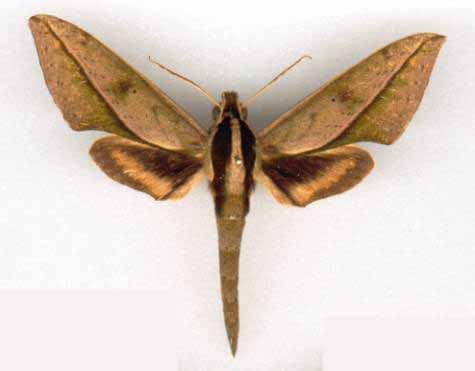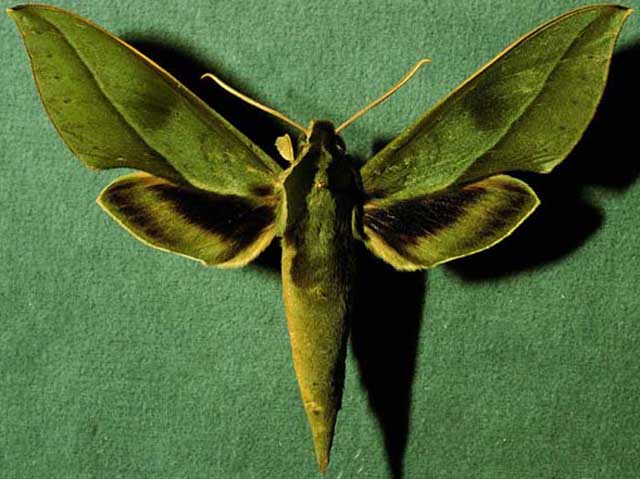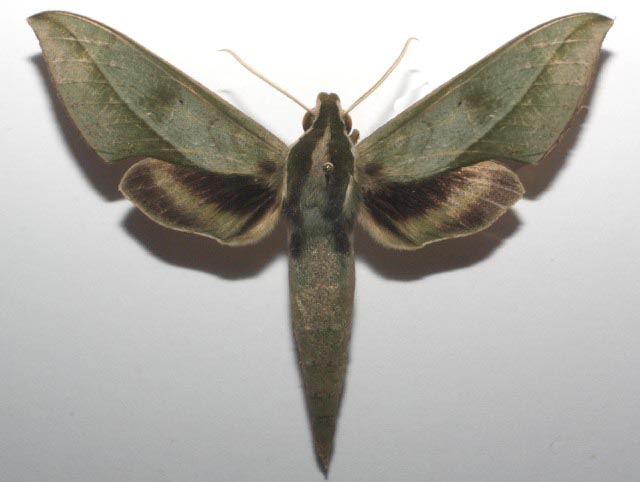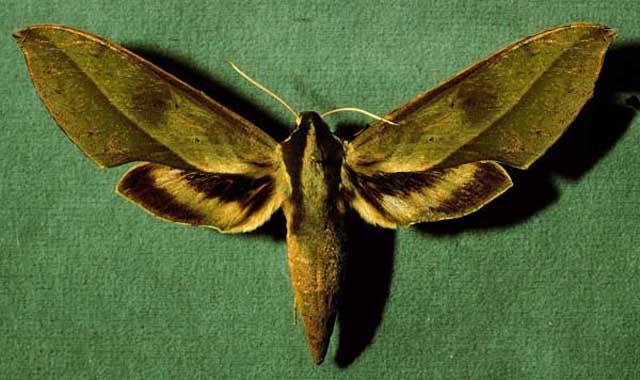Xylophanes staudingeri
Xylophanes staudingeri
Rothschild, 1894

Xylophanes staudingeri?, faded to brown?, courtesy of MAES J.M.
Sphingidae & Saturniidae of Nicaragua CD ROM.

Xylophanes staudingeri male, 86mm,
Guanacaste, Costa Rica, courtesy of Dan Janzen.
This site has been created by Bill Oehlke.
Comments, suggestions and/or additional information are welcomed by Bill.
TAXONOMY:
Family: Sphingidae, Latreille, 1802
Subfamily: Macroglossinae, Harris, 1839
Tribe: Macroglossini, Harris, 1839
Genus: Xylophanes Hubner [1819] ...........
Species: staudingeri Rothschild, 1894
|
DISTRIBUTION:
Xylophanes staudingeri (wingspan: males: 70-86mm; females: 98mm)
fly in
Panama, the specimen type locality;
Guatemala Izabal (JM);
Nicaragua;
Costa Rica: Guanacaste (DJ).
In some taxonomies this species is treated as a synonym of X. amadis cyrene which has been elevated to full species status as cyrene.
Generally, however, cyrene is brownish and staudingeri is green. I think the green can quickly fade to brown in specimen collections.
FLIGHT TIMES:
Xylophanes staudingeri adults fly ????
ECLOSION:
Pupae probably wiggle to surface from subterranean chambers or leaf litter just prior to
eclosion.

Xylophanes staudingeri, Guanacaste, Costa Rica, courtesy of Dan Janzen.
SCENTING AND MATING:Females call in the males with a pheromone released from a gland at the tip of the
abdomen. Males come in to lights very readily, but females are seldom taken in that way.

Xylophanes staudingeri female, 98mm,
Guanacaste, Costa Rica, courtesy of Dan Janzen.
EGGS, LARVAE, PUPAE:
Use your browser "Back" button to return to the previous page.
Goto Main Sphingidae Index
Goto Macroglossini Tribe
Goto Central American Indices
Goto Carribean Islands
Goto South American Indices
Goto U.S.A. tables
Use your browser "Back" button to return to the previous page.
This page is brought to you by Bill Oehlke and the
WLSS. Pages are on space rented from Bizland. If you would like
to become a "Patron of the Sphingidae Site", contact Bill.
Please send sightings/images to Bill. I will do my best to respond to
requests for identification help.
Enjoy one of nature's wonderments: Live
Saturniidae (Giant Silkmoth) cocoons.
 | 
Show appreciation for this site by clicking on flashing butterfly to the left.
The link will take you to a page with links to many insect sites. |





